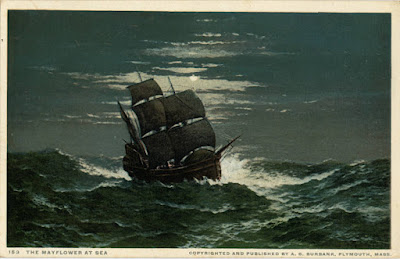 |
| "Des Moines Tribune," July 11, 1978, via Newspapers.com |
Although the following story has no links to Halloween, it is as terrifying as any seasonal horror movie.
Anna Titje Miller of Des Moines, Iowa, was born on October 28, 1920. She was a quiet woman, who never married, and whose social life appeared to be largely limited to dance classes. (She was a good dancer, even though it was hard on her increasingly arthritic ankles.)
Miller worked for twenty-five years as a secretary at Pittsburgh-Des Moines Steel Company, where she was regarded as bright, hard-working, and efficient--qualities she carried over into her highly organized private life. She was methodical, precise, conscientious, and considerate. Although she seemed to have few close personal ties, there is no evidence she had any enemies, either. As far as is known, she never even dated. In short, Miller was what used to be called “a respectable maiden lady.”
In July of 1978, Miller’s well-ordered life took a slightly disquieting turn. She told friends that she had received several strange phone calls, and believed there was a Peeping Tom in the area who had been trying to look through her windows at night. She learned that a few of her neighbors had had similar problems. Still, she didn’t seem to be overly worried.
Sadly, events would soon show that she should have been.
When Miller failed to show up for work on the morning of Monday, July 10, her boss, Robert Naert, was immediately concerned. In all her years at the company, she had scarcely missed a day. When phoning her home got no response, Naert contacted Miller’s brother Merle.
When Merle Miller went to his sister’s house at 3531 Fifty-fourth street, he found the most horrifying sight imaginable: Anna was lying in a pool of blood. Someone had, with particular savagery, beaten and stabbed her to death. She had suffered 13 head wounds, and a finger of her right hand had been cut off during the struggle with her attacker. The murder weapon was probably an ax or hatchet.
Anna’s death appeared to be completely motiveless. Robbery could not have been the motive--nothing in her tidy house was out of place, and her body was still wearing a ring and watch. She had little cash in her home, as she preferred to pay for everything by check. She had not been sexually assaulted. In short, Anna’s gruesome death was a complete mystery.
Her neighbors were, naturally, scared out of their wits for their own safety, especially when there was an eerie sequel to the murder. A few days after Anna’s death, a neighbor found a note on her door reading, “Axes, axes, we all fall down.” Women in the area began getting mysterious and sinister phone calls.
The anonymous fiend’s major targets were a 35-year-old real estate broker and her 18-year-old daughter. (Their names were never published.) They began receiving frightening obscene phone calls--at least fifty of them. The caller showed intimate knowledge of the women’s movements--particularly the daughter’s. During one call, he threatened to blow up their house. The phone company had no success in tracing the calls. (In any case, the police advised the women that even if the phone maniac was found, the most he would face was a $25 fine.)
The daughter began getting threatening notes on her car, such as “SCREAM ALL YOU WANT, NO ONE CAN HEAR YOU.” Another was a page torn from a Reader’s Digest, showing a woman being attacked from behind while talking on the phone. A handwritten note on the page added, “You think this can’t happen to you?” On one occasion, the daughter found a note on her car saying, “I don’t want you to leave.” When she tried to start the car, she found that someone had disconnected the ignition coil. The daughter took to carrying pepper spray everywhere she went. She never walked alone in public, someone would escort her to her car when she left her college classes, and at home, the doors and windows were always locked. In short, the two women were under siege by an unknown madman. Police tried to reassure the women that they were in no physical danger, but after what had happened to Anna Miller, the mother and daughter were probably unconvinced.
What makes this case even more disturbing is the fact that I was unable to find any resolution. In November 1978, the newspapers reported that the two women were still being tormented by their mysterious stalker, but there were no subsequent articles about the matter. I have no idea when--or how--the harassment ceased. Although it seems likely that this man was also Anna Miller’s killer, police were never able to link him to the murder, which remains unsolved.















